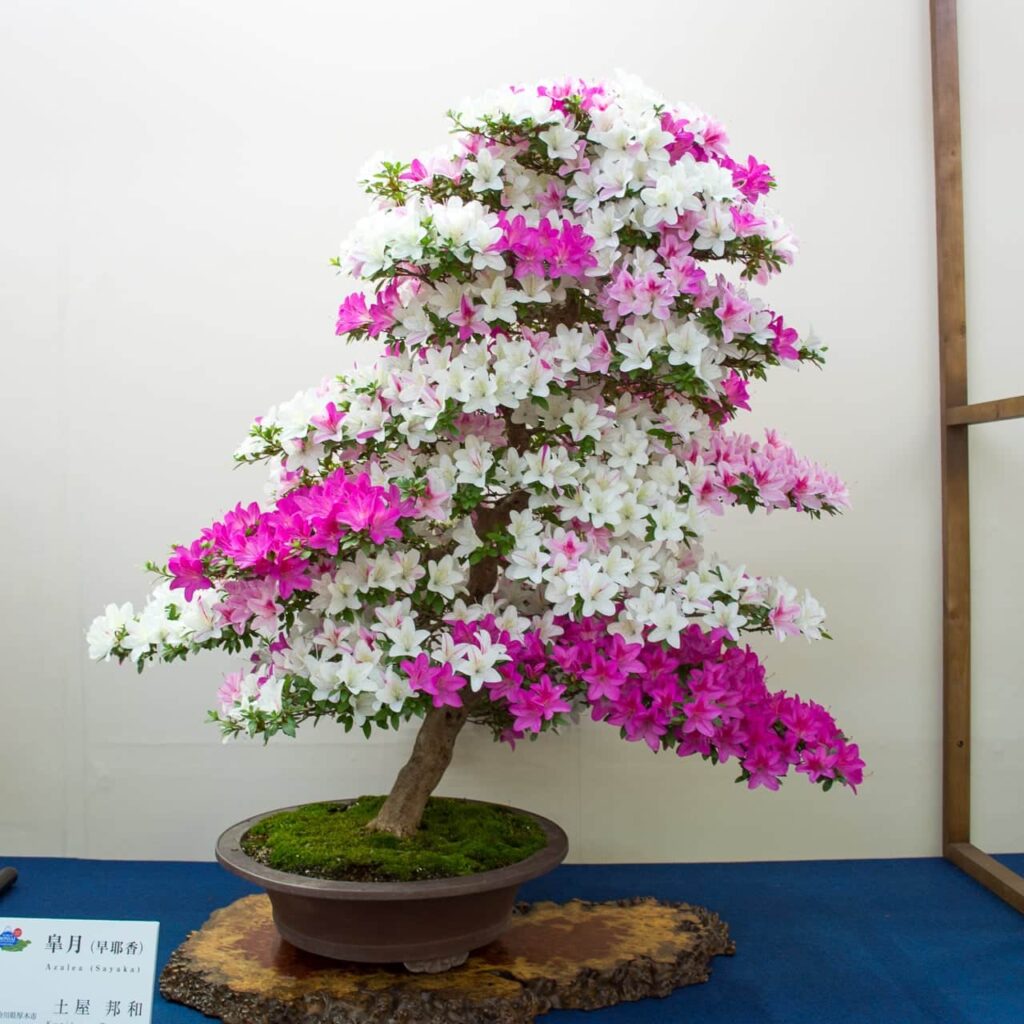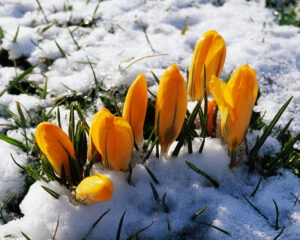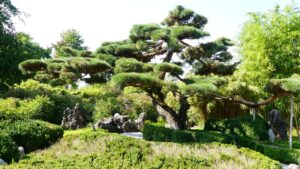Tree of the Month - April 2023

The Satsuki evergreen azalea is a popular bonsai plant that has been hybridized in Japan for over 500 years. The first Satsuki azaleas were likely natural hybrids of R. indicum and R. tamurae. These late-blooming plants feature 1 to 5-inch single flowers with a range of shapes, from rounded overlapping lobes to narrow wide-spaced lobes, with lobe edges varying from flat to frilled. The flowers come in a variety of colors, including white, pink, yellowish-pink, red, reddish-orange, and purple, with different color patterns such as solids and stripes, flakes, lines, sectors, and margins of color on a lighter background. These color patterns are highly prized by the Japanese, who have carefully described and classified them since 1692 in the book A Brocade Pillow.
Most Satsuki azaleas are cold-hardy to 0°F, with some being hardy to -10°F, but they should be sited with protection from the afternoon sun. Satsuki names have been transliterated from Kanji to English, with spelling and spacing variations depending on the transliteration system used. Capitalization also varies from Japanese capitalization to the capitalization endorsed by the International Code of Nomenclature for Cultivated Plants.
Satsuki azaleas are highly valued in the bonsai community for their flowering beauty and smooth, muscular-looking trunk. There are over 300 varieties of hybrids and floral presentations available today. However, the more hybridized Satsuki azaleas become, the more delicate, finicky, and short-lived they can be, especially species like Kinsai spider flower Satsuki, which have a shortened lifespan of 60 to 80 years due to their hybridization. Original strains like Kaho or Osakazuki, on the other hand, can live for over 100 years and maintain a tremendous amount of strength.
Satsuki azaleas are popular bonsai plants for many reasons. They can take a hard pruning, the flowers vary in color, shape, and size, and they take well to pot culture. Azaleas prefer acidic soil and are basally-dominant plants, unlike other plants used in bonsai, which are apically-dominant. Satsuki azaleas are typically cultivated in a specialty soil called Kanuma, which is an incredibly soft, acidic, volcanic soil that accommodates the fine, soft, steel wall-like root system that Satsuki azaleas use for their water conductivity and nutrient uptake. The best time to repot them is after blooming is finished, although repotting can also be done in the late fall with care. Flowers take a tremendous amount of energy from the plant, so it is best to remove all the flowers, old and new, and the remaining buds at the same time to ensure that the buds will open at the same time the following year.
The Satsuki azalea bonsai requires specific care to thrive as a healthy and beautiful miniature tree. Here are some tips on how to care for your Satsuki azalea bonsai:
Care Tips
- Watering: Water the tree when the soil starts to dry out, but don’t let the soil dry out completely. Azaleas like moist soil but not standing water.
- Fertilizing: Fertilize your tree every two weeks during the growing season with a balanced fertilizer to promote healthy growth.
- Pruning: Regular pruning is required to keep the shape and size of your tree in check. Azaleas can handle hard pruning.
- Repotting: Repot your tree after it finishes blooming in the spring to refresh the soil and promote healthy growth. Repot every two to three years.
- Sunlight: Satsuki azalea bonsai prefers partial shade, especially during the hottest parts of the day. Place your tree in a location that gets bright, filtered light but not direct sunlight.
- Soil: Use well-draining, acidic soil mix to pot your Satsuki azalea bonsai. Specialty soil like Kanuma is an excellent choice for this plant.
- Temperature: Keep your tree in a cool, draft-free location. Satsuki azalea bonsai can tolerate cold temperatures, but they do not like to be too hot.
By following these simple care tips, you can ensure that your Satsuki azalea bonsai will thrive and produce beautiful blooms year after year.
Compiled by Katlin Mulligan
https://www.azaleas.org/687-2/



